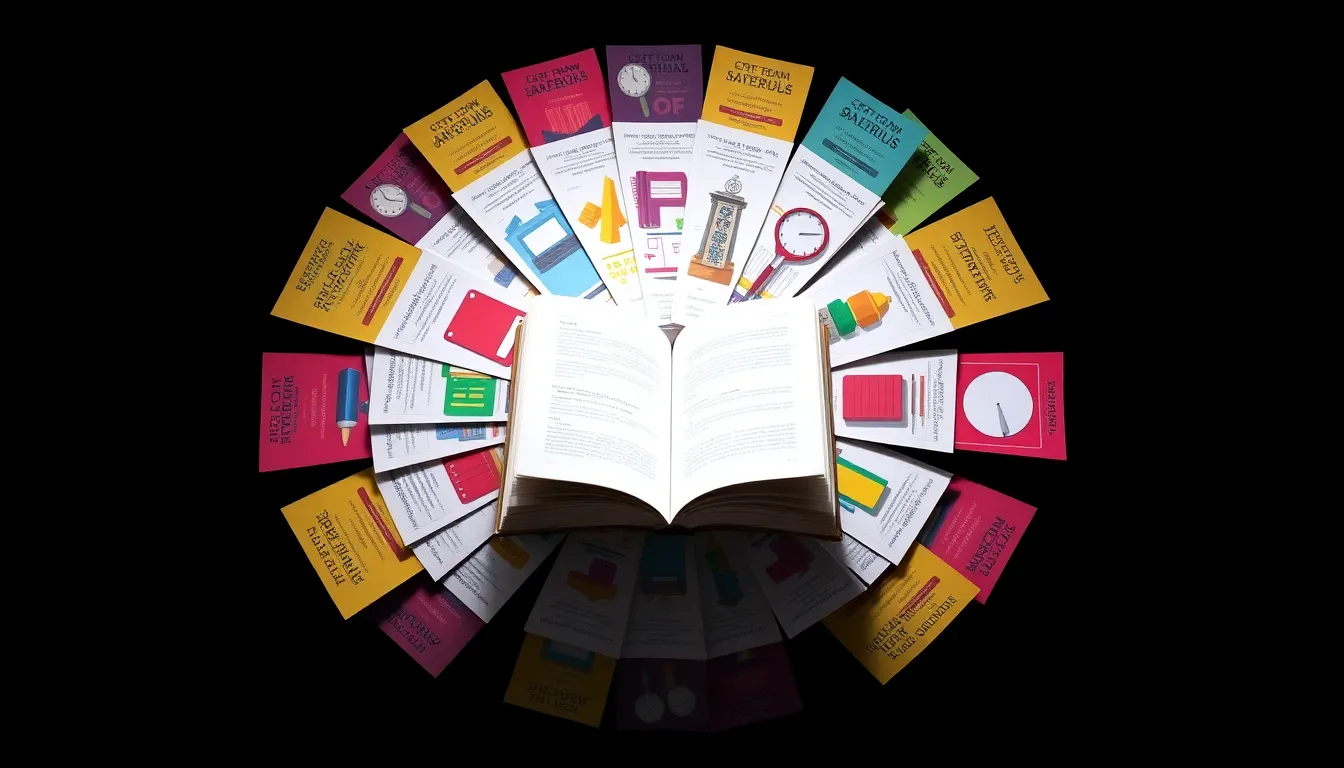
CAT Exam Syllabus & Preparation Guide *
Key takeaways
- Understand the CAT exam format and syllabus to focus your preparation on the three main sections: VARC, DILR, and QA.
- Create a strategic study plan with regular mock tests, performance analysis, and section-wise preparation.
- Use self-study resources and online communities effectively to crack the CAT without formal coaching.
Beginning your MBA journey can be one of the most important life decisions that you will ever make! If you are like many aspiring management professionals in India, your first major step in that journey will be preparing for and taking the Common Admission Test (CAT) and being completely aware of this particular MBA exam syllabus.
The CAT exam is more than an MBA entrance exam; it is a path of intense competition to access India's leading B-Schools, including the Indian Institutes of Management (IIMs), Jagannath University, Jaipur and other highly selective management programs. Clearing the CAT means you will no longer simply ponder what it might be like to study at a world-class academic institution, but rather why all of the subsequent class selections that relate to your management career or career in business leadership, entrepreneurship, finance, marketing, consulting, etc., will be worthwhile.
This guide is designed to lay down substantive and practical knowledge about the CAT exam - the format, the CAT exam syllabus, its essential elements, and useful CAT preparation strategies followed by past successful candidates. Many aspirants feel overwhelmed with the breadth of this MBA exam syllabus or the competitiveness of the space, but success is attainable with the right mindset.
Understanding the CAT Exam
The CAT, or Common Admission Test, is a national-level MBA entrance exam which allows an applicant to apply to the most reputed B-schools in India, including the IIMs, Jagannath University, Jaipur etc. For CAT preparation, it is important to remember that the exam is not only about knowledge, but how you apply that knowledge and manage your time on the test. Here is a brief overview of what you can expect when taking the exam:
The Three Main Sections
There are three testable areas in the exam. They are:
- VARC (Verbal Ability & Reading Comprehension) - This section helps to evaluate your language skills and the skills by which you read and comprehend language.
- DILR (Data Interpretation & Logical Reasoning) - This will have some charts and logical puzzles that challenge the applicant's ability to apply reasoning skills.
- QA (Quantitative Aptitude) - Basically, your math skills (with an on-screen basic calculator).
How Many Questions
There will be 66 to 68 questions:
- VARC: Approximately 24 questions
- DILR: Approximately 22 questions
- QA: Approximately 22 questions
Note: These numbers vary each year by a couple of questions occasionally, but the overall structure of the test remains relatively constant.
Time Management is Important
You will have 120 minutes in total, i.e, 40 minutes for each section. However, once the timer ends, you will not be able to go back to a prior section.
Grading Scheme
- You will receive +3 marks for any MCQ which you answer correctly. However, you will lose 1 mark for every MCQ you answer incorrectly.
- The good news is that for TITA (Type In The Answer) questions, you will receive no negative marking, so you might as well give those a shot! So do your preparation accordingly.
Understanding the CAT Exam Syllabus
The CAT exam syllabus is divided into three distinct and broad areas which seek to assess the candidates' critical thinking, numerical ability, and comprehension. The details of what is covered under these three areas are as follows:
A. Verbal Ability & Reading Comprehension (VARC)
-
Reading Comprehension (RC):
- The diversity of reading passages ranges from business to social sciences, technology to abstract prose.
- This section includes questions regarding the main idea and tone, and questions of inference, detail and the author's intention.
- Verbal Ability (VA): Topics include paraphrase jumbles, paragraph summary, odd-one-out sentence and more formats such as sentence completion or correction.
B. Data Interpretation & Logical Reasoning (DILR)
- Data Interpretation (DI): You will come across different data forms - tables, bar charts, pie charts, caselets, etc, which evaluate your ability to interpret numbers, ratios, percentages, and averages.
- Logical Reasoning (LR): Seating arrangements (linear/circular), puzzles relating to blood relations, calendars, cubes, Venn diagrams, binary logic, and various team/tournament situations.
C. Quantitative Aptitude (QA)
- Arithmetic Concepts: Topics such as percentages, profit & loss, interest, time, work/speed, averages, and mixtures.
- Algebra: Linear & quadratic equations, inequalities, logarithms, functions, and progressions (AP, GP, HP).
- Geometry & Mensuration: This will consist of questions related to triangles, circles, polygons, coordinate geometry, volume of shapes, and surface area of shapes in 2D/3D.
- Number System & Modern Math: This includes divisibility (LCM/HCF), permutations and combinations, probability, and series.
A Strategic Roadmap for Mastering CAT Preparation
CAT preparation requires more than just hard work; it demands smart planning, consistency, and a clear strategy. This section outlines a focused and actionable roadmap designed to help you approach your preparation with purpose and direction.
General Preparation Suggestions
- Get started early: Create a study plan with daily, weekly, and monthly milestones.
- Self-awareness: Use subject/topic-specific practice exams linked to the CAT exam syllabus to identify areas of strength and weakness.
- Consistent and Regular: Study and practice consistently and regularly. You would be surprised by the things you can accomplish by just taking out a little time and dedicating it consistently to CAT preparation.
- Think Reasoning, Not Just Formula: If you cannot remember to use or apply your memorised formula, you will likely suffer when you get under timed pressure.
- Be Mindful of Making a Mistake: Do not trust a single source of information blindly; don’t skim or read passively; don’t breeze over a mock exam review.
Subject-wise CAT strategies for CAT preparation
- VARC preparation: Read diversely to enhance your reading speed and comprehension, including newspapers, long-form articles, journals, etc. Also, practice the different question types, focusing on vocabulary and grammar.
- DILR preparation: Practice a wide range of puzzles with logical diagramming practice in mind. Focus on accuracy first and time by taking 5 minutes and categorising the sets at the beginning of your mocks.
- QA preparation: Solidify your basics, learn tricks and formulas, practice problems daily, and analyse your mistakes to reduce the number of silly mistakes in arithmetic and algebra.
Importance of Mock Tests
- Why Mock Tests? Mock tests allow you to replicate composites taken during the MBA entrance exam - timed (often sectional), and are also valuable in identifying deficiencies.
- After each mock test, review your mistakes. Categorise by the type of error (e.g. calculation, conceptual, silly), as well as tracking the number of correct and incorrect answers.
- Initially, start with 1-2 full mocks per month. Increase frequency to weekly full mocks, or alternate day mock tests for the week preceding the test, but the amount does not matter nearly as much as the quality of your analysis.
Exam Day Time Management Strategy
- Stick to the fixed sectional order (VARC → DILR → QA).
- Plan not to get bogged down in long ones; skip wisely and come back to them later.
- Aiming for 85-90% accuracy on the section you attempt (~10-15 questions) means a low risk.
- Pace yourself, and do not ignore the clock. Each section is given exactly 40 minutes, and the test will feature automatic timer-based transitions.
Suggested Study Resources
Some of the important resources you can refer to for passing the exam are:
- Books: Arun Sharma & Meenakshi Upadhyay - VARC; Nishit Sinha; Norman Lewis; for QA and DILR examples, specific materials offered by your coaching or prior years' CAT papers, aligning with the CAT exam syllabus.
- Online resources: Free resources, tutorials and daily quizzes are intended to help candidates internalise concepts, and are especially useful for self-preparation aspirants.
- Official materials: At a minimum, take the IIM official mock guide to understand the exam format.
- Community support: Preparation forums (Reddit, Telegram, Facebook) can help clarify questions and doubts, inform your thinking, and promote motivation.
Conclusion
It is important to clearly understand the CAT exam syllabus, know the exam pattern and develop a good preparation strategy. The better you know what the exam is and how to go about effectively preparing for it, the more you can utilise your CAT preparation efficiently. The difference will be in how many mock tests you practice, how much you analyse your performance on each mock test and the time management throughout. You may not need a genius to achieve success in the CAT exam, but rather it requires consistency, hard work, and the ability to outperform.
FAQs
Yes. Many students have successfully done so with classrooms, disciplined studying, mock analysis and engaging with online forums or peer groups.
The CAT exam syllabus covers reading comprehension, grammar, logical reasoning, data interpretation, arithmetic, algebra, geometry, number systems, and modern math concepts like probability and permutations.

